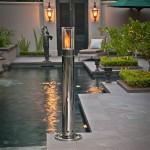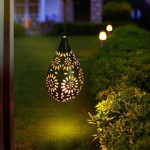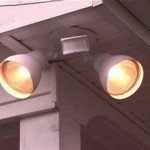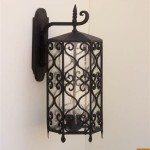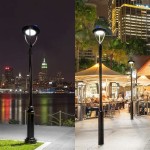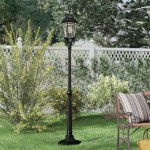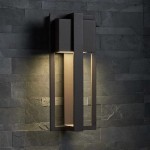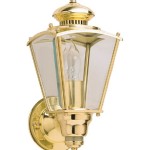Best Light Bulb For Outdoor Fixture: Essential Aspects to Consider
Outdoor lighting is crucial for illuminating pathways, enhancing security, and creating a welcoming ambiance. Selecting the right light bulb for your outdoor fixtures is vital to ensure optimal performance, energy efficiency, and longevity. Here are some essential aspects to consider when choosing the best light bulb for your outdoor fixture:
1. Bulb Type
There are various light bulb types available for outdoor fixtures, such as incandescent, halogen, LED, and CFL. Each type offers distinct characteristics:
- Incandescent: Traditional bulbs that provide a warm, yellowish glow but are less energy-efficient.
- Halogen: Compact bulbs with a brighter and whiter light output, but also less energy-efficient than LEDs.
- LED: Highly energy-efficient bulbs with a long lifespan and a broad range of color temperatures.
- CFL: Compact fluorescent bulbs that use less energy than incandescent bulbs but may contain mercury.
2. Lumens and Brightness
Lumens measure the amount of light a bulb emits. For outdoor fixtures, higher lumen bulbs provide brighter illumination. Determine the desired brightness level based on the area's size and purpose. For example, a patio or porch may need 2,000-4,000 lumens, while a pathway may require 1,200-2,000 lumens.
3. Color Temperature
Color temperature refers to the hue of light a bulb produces. Measured in Kelvins (K), a lower temperature (e.g., 2700K) results in a warmer, yellowish light, while a higher temperature (e.g., 5000K) produces a cooler, bluish light. Choose the color temperature that best suits the desired ambiance. Warmer temperatures are often used for residential areas to create a cozy atmosphere, while cooler temperatures are suitable for commercial or industrial settings.
4. Weather Resistance
Outdoor light bulbs must be weather resistant to withstand extreme temperatures, humidity, and precipitation. Look for bulbs with an IP (Ingress Protection) rating of IP65 or higher, which indicates their resistance to moisture and dust.
5. Energy Efficiency
Energy efficiency is crucial for reducing energy consumption and costs. LED bulbs are the most energy-efficient option, consuming up to 80% less energy than incandescent bulbs. They have a longer lifespan, typically lasting several years, reducing the need for frequent replacements.
6. Dimmability
If desired, choose dimmable bulbs to adjust the brightness level according to specific needs. Dimming capability allows for customized lighting, creating different ambiances or energy savings.
7. Compatibility
Ensure that the light bulb you choose is compatible with your outdoor fixture's socket type. Different fixtures have different socket configurations (e.g., E26, GU10, B22), so it's essential to check before purchasing.
By considering these essential aspects, you can make an informed decision and select the best light bulb for your outdoor fixture that meets your specific requirements and enhances the aesthetics and functionality of your outdoor space.
Best Outdoor Lighting Bulbs Of 2024

9 Best Light Bulbs For Outdoor Fixture In 2024

Choose The Best Color Temperature For Your Outdoor Lighting Knowledge Base Super Bright Leds

How To Choose The Best Outdoor String Lights

The 3 Best Smart Outdoor Lights For Backyards Of 2024 Reviews By Wirecutter

Outdoor Lighting Guide Lowe S

Color Temperature Your Guide To Outdoor Lighting

The Best Outdoor Light Bulbs Of 2024 Top Picks By Bob Vila

How To Choose The Best Outdoor Lighting Color Temperature Solutions

Dusk To Dawn Light Bulbs Outdoor
